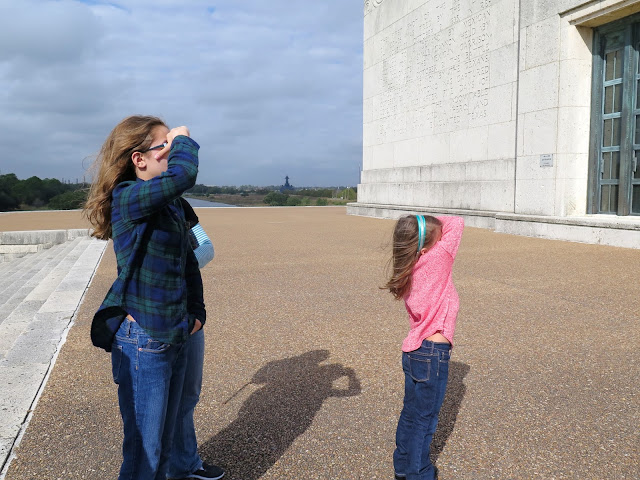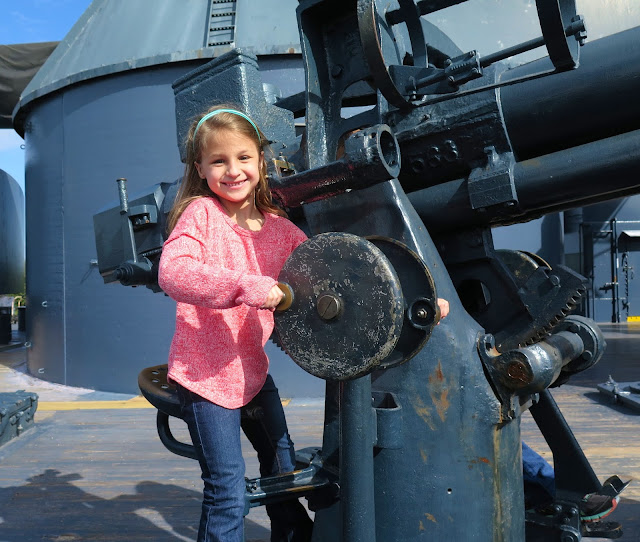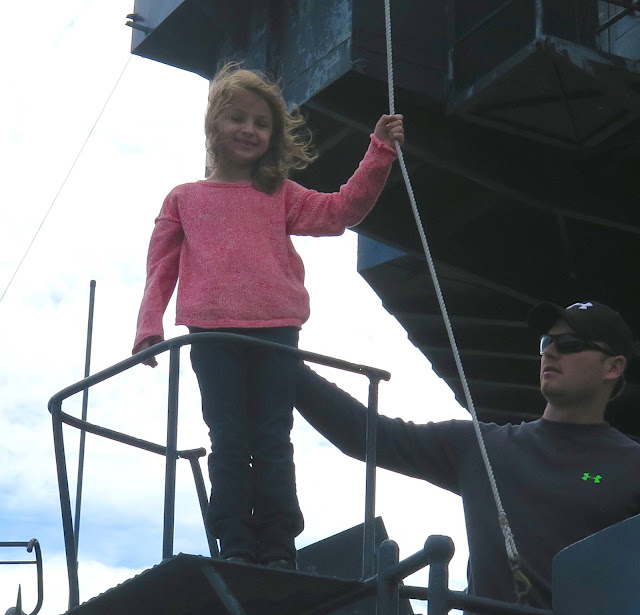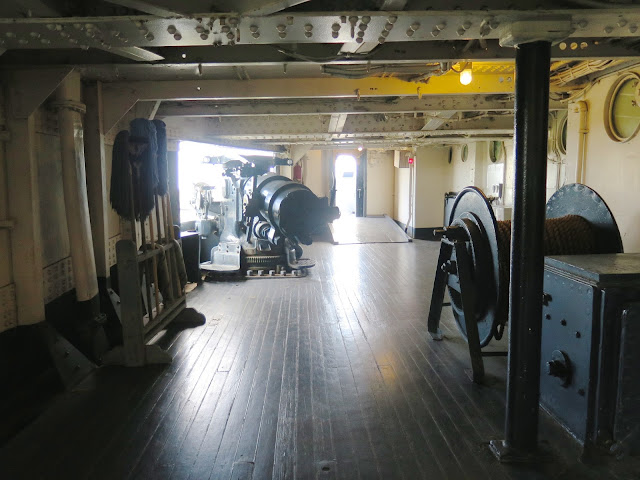Last Wednesday we went to the San Jacinto Monument and Museum and the Battleship of TEXAS. Once the clouds disappeared we had a beautiful windy day.
It's pretty awesome to have your grandkids homeschooled and be invited along for the lessons. :) History is so much more interesting the second time around.
On May 13, 1846, the United States of America declared war on the United Mexican States. In response to this declaration, thousands of individuals mustered in volunteer regiments across America to join the Regular Army to fight for the Stars and Stripes. The official cause of the war was both the American annexation of the Republic of Texas and the border dispute between Mexico and the new state over whether the national border was the Rio Grande or the Nueces River. Texas claimed the Rio Grande and Mexico claimed the Nueces. After the Mexican Army fired and killed several provocatively placed American soldiers sent into the disputed area along the border by President James K. Polk, the President asked for and received a declaration of war from congress. The two years of fighting that followed was a valiant but ineffective defensive war for Mexico, after which a huge portion of their nation became American territory.
These paintings and displays were in the lobby of the Monument.
Due to the heavy clouds it was hard to see very far into the city out of this window.
The other side provided us with a clearer view.
How lucky is he to be exposed to so much history at such a young age. He loved all of it.
After we finished looking out from the top of the monument we went to the gift shop. Uncle Brad bought Mr. W a Longhorn which Mr. W renamed to "reindeer". He knew it was a Longhorn but he insisted on calling it a reindeer. He thought it was so funny. He definitely made us laugh.
From there we went into the gallery that showcases the Museums Permanent Exhibit Hall. There are period artifacts, documents, prints and photographs that tell the story of Texas. In one of the cases there were rules for Mrs. America. The two that I remember are "keep a positive attitude and keep company with people of same as your attitude will become negative" and "do not fall in to rut of cooking same dishes over and over". I laughed. We are so guilty of the second one. Imagine that way back then the ladies were told things similar to now.
You can walk or drive the Battleground and relive the famous battle for Texas Independence. There are granite markers that designate important sites of the Battle's events.
Ms. A and Sweet P are learning about the weapons they used in fighting the war.
Much to Uncle Brad's demise, Mr. W went up and down this ramp many, many times. It's funny how a child knows who they can get away with stuff. Uncle Brad is definitely Mr. W's buddy.
I love this pic. He is grinning so big because he thinks Uncle Brad can't catch him. Ha! The joke is on him.
And of course the girls wanted to do it, too.
Next we toured the Battleship TEXAS. The Battleship TEXAS is the last of the world's "dreadnoughts," the big-gun battleships designed and built at the beginning of the 20th century. When she was commissioned in 1914 TEXAS was the most powerful weapon in the world and the most complex product of an industrial nation that was becoming a force in global events. She is now the only surviving U.S. naval ship that served in both World Wars.
TEXAS served in World War I as part of the Battleship Force of the Atlantic Fleet. She participated with the American squadron in maneuvers in the North Sea against threats from the German High Seas Fleet. A gun crew of TEXAS sailors loaned to the SS MAGNOLIA, a merchant ship, fired the first shots of the U.S. Navy in the War.
However, Battleship TEXAS saw no combat action in World War I. After the Armistice on November 11, 1918, TEXAS sailed with the Grand Fleet, escorting the German Fleet to Scotland for surrender.
In 1925, TEXAS underwent major modifications. Modern oil-fired boilers replaced her older coal-fired boilers; a single stack replaced the two originals used to vent boiler smoke; stronger tripod masts replaced the original cage masts; and six of her 5-inch guns were moved from the second deck to the main deck aircastles.
Torpedo blisters were also added as protection against torpedo attack. She emerged from the Norfolk Navy Yard in 1927, as the flagship of the American Fleet. For the next 12 years, she steamed the Atlantic and Pacific, representing American naval power.
The stairs are very steep and very short.
There were mops everywhere. Can you imagine trying to keep it clean with so many people on board?
We ended our day at Gringo's Mexican Kitchen. It's one of our favorite places to eat.
Hope you are enjoying the holidays.
Take care,
xoxoxo















































 Hi, I’m Debbie and I’m a Louisiana born/Texas living wife to a wonderful man who is patient and understanding (99% of the time) of my never-ending list of projects.
Hi, I’m Debbie and I’m a Louisiana born/Texas living wife to a wonderful man who is patient and understanding (99% of the time) of my never-ending list of projects.
No comments:
Post a Comment